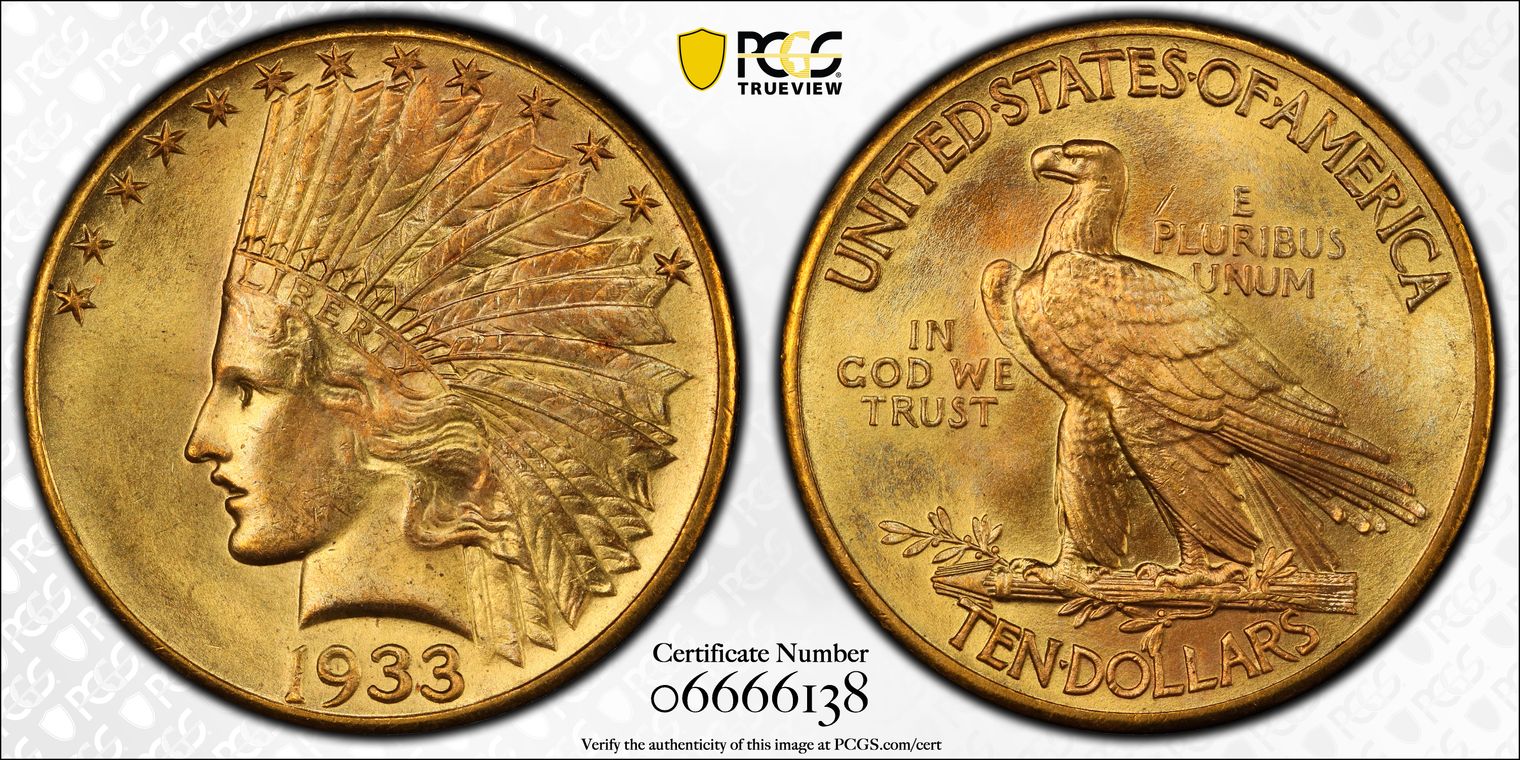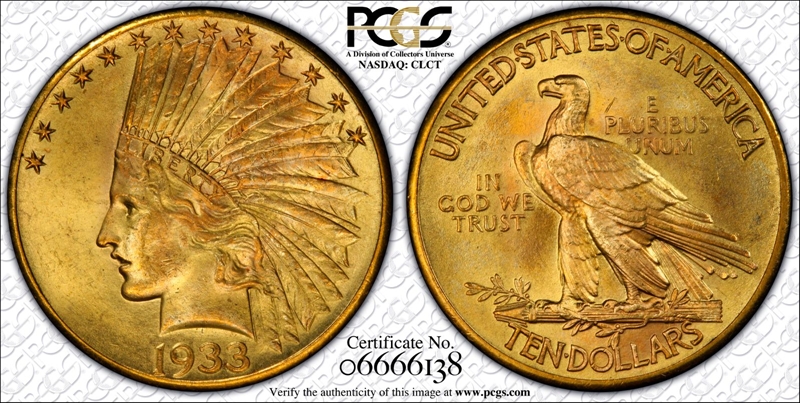1933 $10 MS65+ 认证号06666138, PCGS号8885
专家评论
Ron Guth
In 1933, President Franklin Roosevelt issued an executive order requiring American citizens to turn over to the government "...all such coin, bullion or other possessions of gold and silver...within fourteen days...for compensation at the official price, in the legal tender of the Government." Certain coins with numismatic premiums were excepted, but all current coinage, including 1933 eagles, would have been included. The original mintage of the 1933 $10 gold pieces was high, but very few were released before the government halted their distribution. Ultimately, all but a few examples in collectors' hands were melted down. Thus, due to historic circumstances, Roosevelt created one of the great American coin rarities of the 20th centuries with the stroke of a pen.
The observations made by the late David Akers more than 20 years ago have held up remarkably well (see below). No superb examples have shown up as of yet, and no European hoards have been discovered. The PCGS Condition Census consists almost entirely of gem (MS65) examples, the best being a single PCGS MS65+. For collectors, choosing an example boils down to luck, price, and personal preference, just as it always has.
David Akers (1975/88)
In terms of total number of specimens known in all grades, both circulated and Mint State, the 1933 is definitely the rarest issue in the series. However, because all known 1933 eagles are Uncirculated, when one considers only the Mint State grades this issue ranks third in rarity behind the 1913-S and 1911-D. Most of the 30 to 35 known examples are considerably bagmarked, which is surprising since they were all surely obtained directly from the Mint, and one would expect that care would have been taken to select particularly nice examples. (1907 Rolled Edge eagles fall into exactly the same category yet are consistently nicer on average than the typical 1933.) I do not know of any superb (MS-67) examples, but the Delp, Bareford, Kruthoffer, Eliasberg and Stack's October 1984 Sale specimens were all gems, and the Einstein Collection coin was very close. None of these is clearly distinguishable as "the finest known," but some might prefer one over the others, depending on which factors are most important to a particular individual.Most 1933 eagles are fully frosty although some (cf. Stack's October 1984 Sale, Lot 1377) have a distinctly satiny appearance. Luster is generally only average or slightly below average for the series, but the satiny ones have very good lustre as do a few of the frosty ones. The 1933 is always well struck and the color is typically very good, usually light to medium greenish gold with rose, orange, or coppery highlights. Many specimens also have reddish copper spots. The 1 in the date is almost always weaker than the other numerals. This issue is one of the most famous and popular of the 20th century. The mintage is high but virtually all were melted prior to release. Those in existence were undoubtedly obtained directly from the Mint prior to March 1933. Unlike the 1933 double eagle, the legal ownership status of the 1933 eagle has never been in question.
稀有性和存量估计 了解更多
| 所有评级 | 40 |
| 60或以上 | 37 |
| 65或以上 | 10 |
| 所有评级 | R-8.7 |
| 60或以上 | R-8.7 |
| 65或以上 | R-9.5 |
| 所有评级 | 1 / 27 |
| 60或以上 | 1 / 27 |
| 65或以上 | 4 / 27 TIE |
| 所有评级 | 1 / 32 |
| 60或以上 | 1 / 32 TIE |
| 65或以上 | 4 / 32 TIE |

























